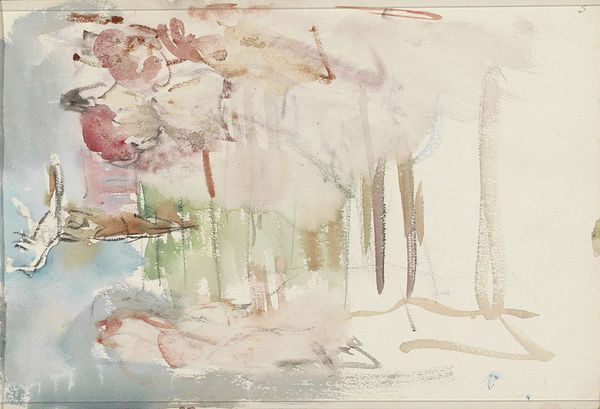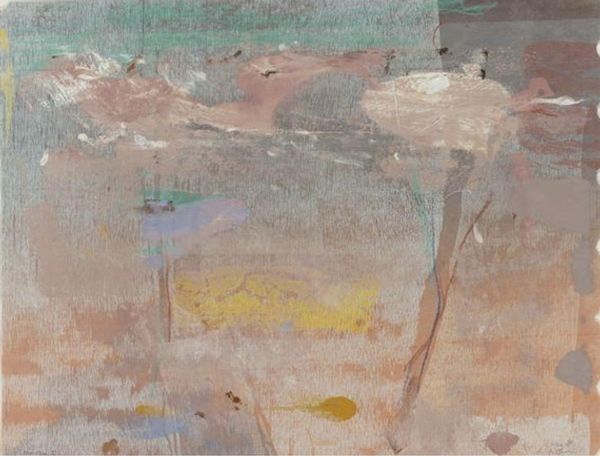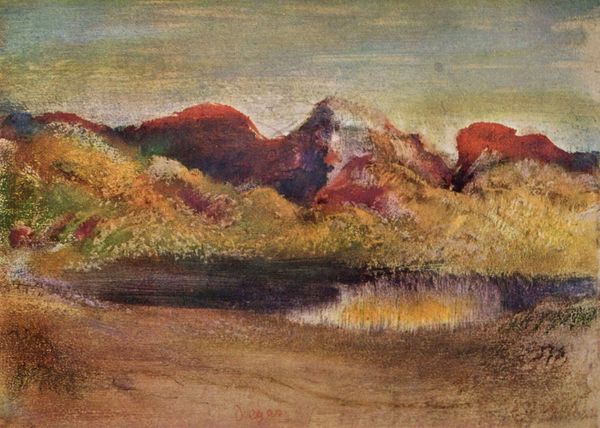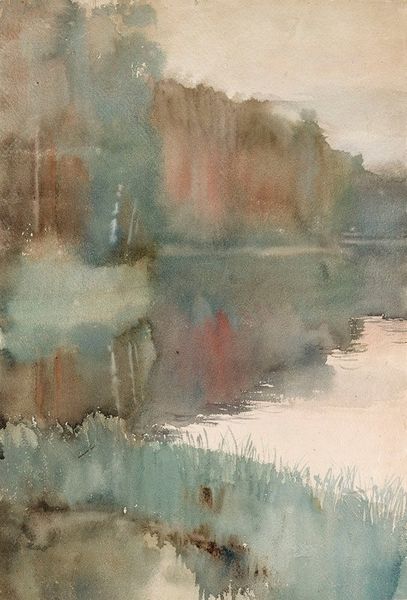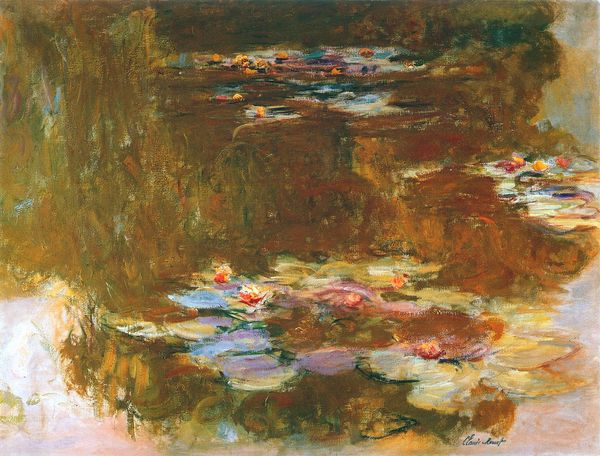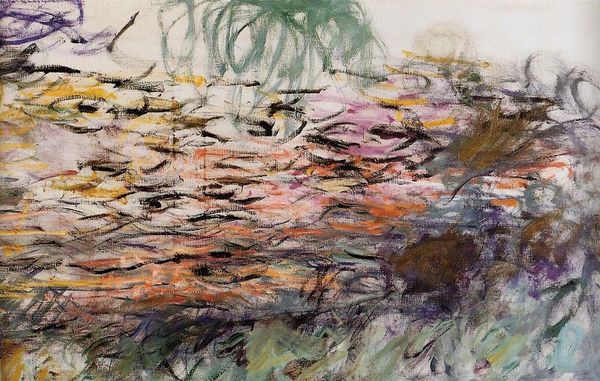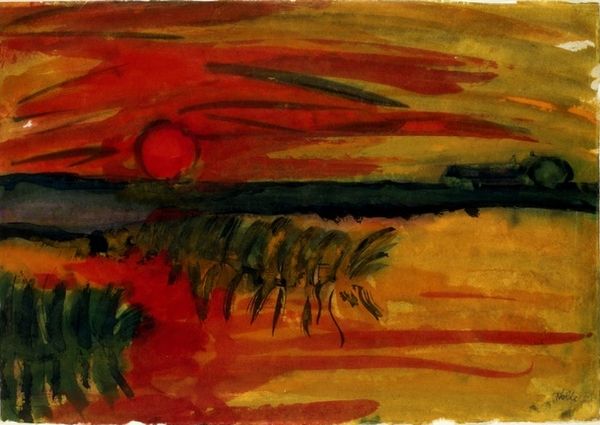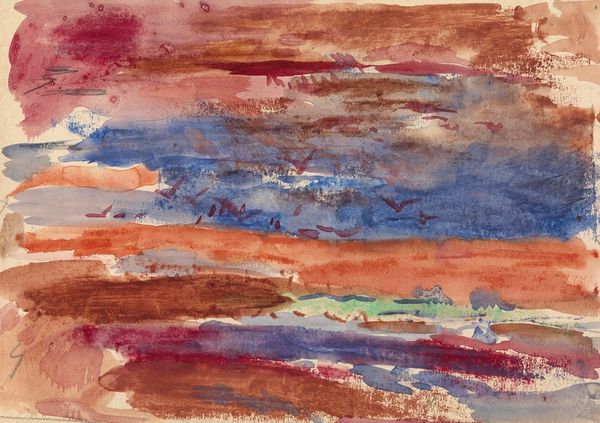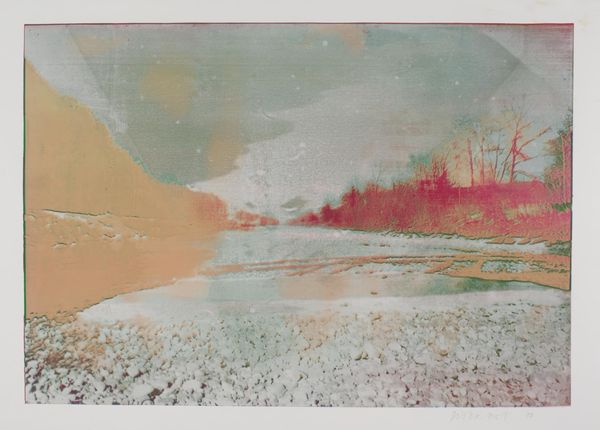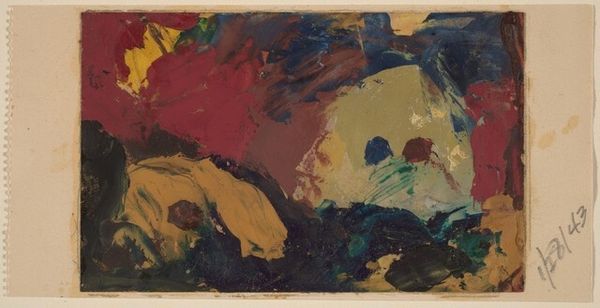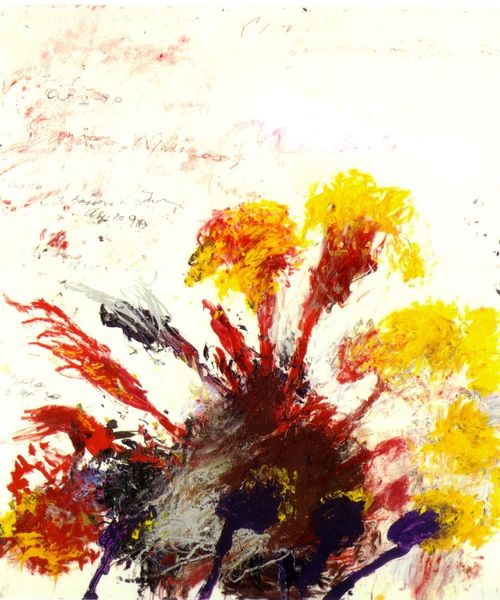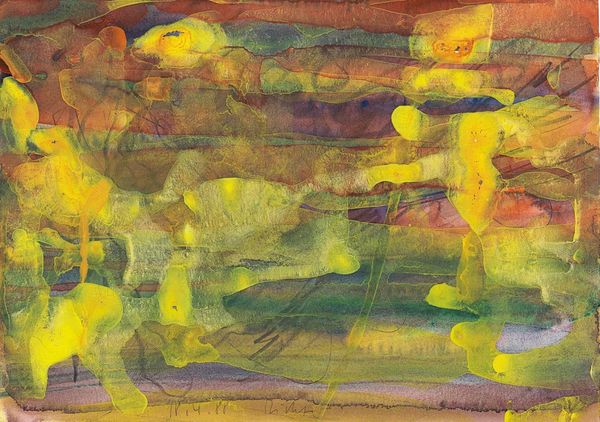
matter-painting, oil-paint
#
abstract-expressionism
#
abstract expressionism
#
matter-painting
#
oil-paint
#
landscape
#
oil painting
#
abstraction
Copyright: Ralph Rosenborg,Fair Use
Editor: We're looking at Ralph Rosenborg’s "Monhegan Island Seascape," painted in 1959 using oil paint. The impasto technique really stands out to me—the paint is so thick! It almost feels sculptural, doesn't it? How would you interpret this work from a formalist perspective? Curator: Indeed. Rosenborg's heavily textured application of paint in "Monhegan Island Seascape" directs us immediately to the materiality of the work. Note the stratified layers of pigment. Observe how color and form articulate the image’s structural elements, pushing beyond a mere representation of landscape. Do you see how the artist employs contrasting colors to create visual tension? Editor: Yes, the way the pinks and oranges fight against the dark greens and browns is fascinating! But how does that tension function within the overall composition? Curator: It underscores the painting's inherent flatness, despite its illusionistic depth created by the heavy impasto. The painting self-consciously draws attention to its constructed nature rather than mimicking reality. Notice the tension between surface and depth created by these devices. Consider it a landscape reduced to its most essential formal components. Editor: That’s really interesting! So, it's less about a specific place and more about the act of painting itself? I never thought of abstract expressionism that way. Curator: Precisely. The seascape provides a motif, yes, but it becomes a vehicle for exploring texture, color relationships, and the very substance of paint. Reflect on how the tangible qualities of the materials supersede representational concerns. Editor: Thanks, I'm now much more attuned to how texture and color interact and generate meaning, divorced from direct representation. Curator: Agreed. Formalism enables us to appreciate Rosenborg's masterful manipulation of medium to elicit emotions and thought in ways detached from mimetic constraints.
Comments
No comments
Be the first to comment and join the conversation on the ultimate creative platform.
